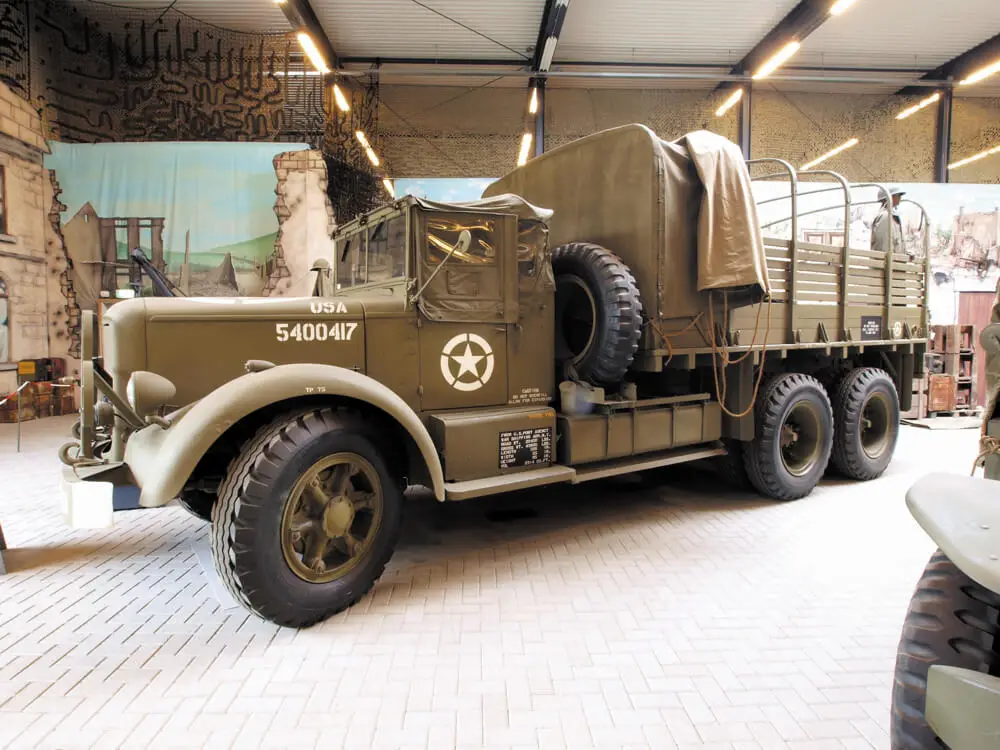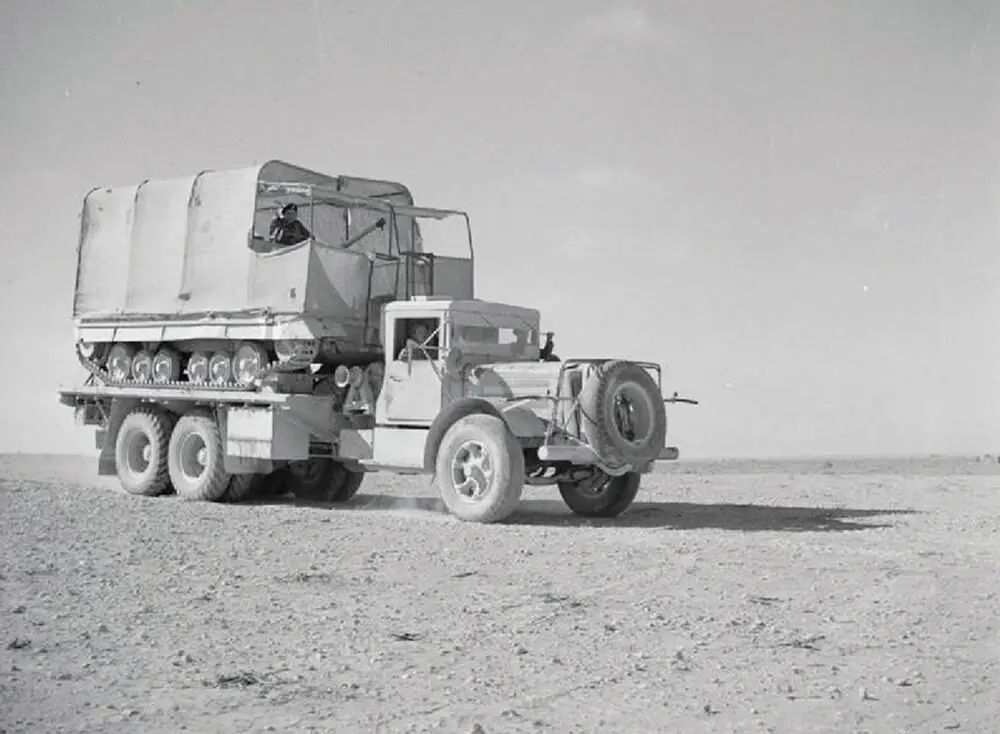
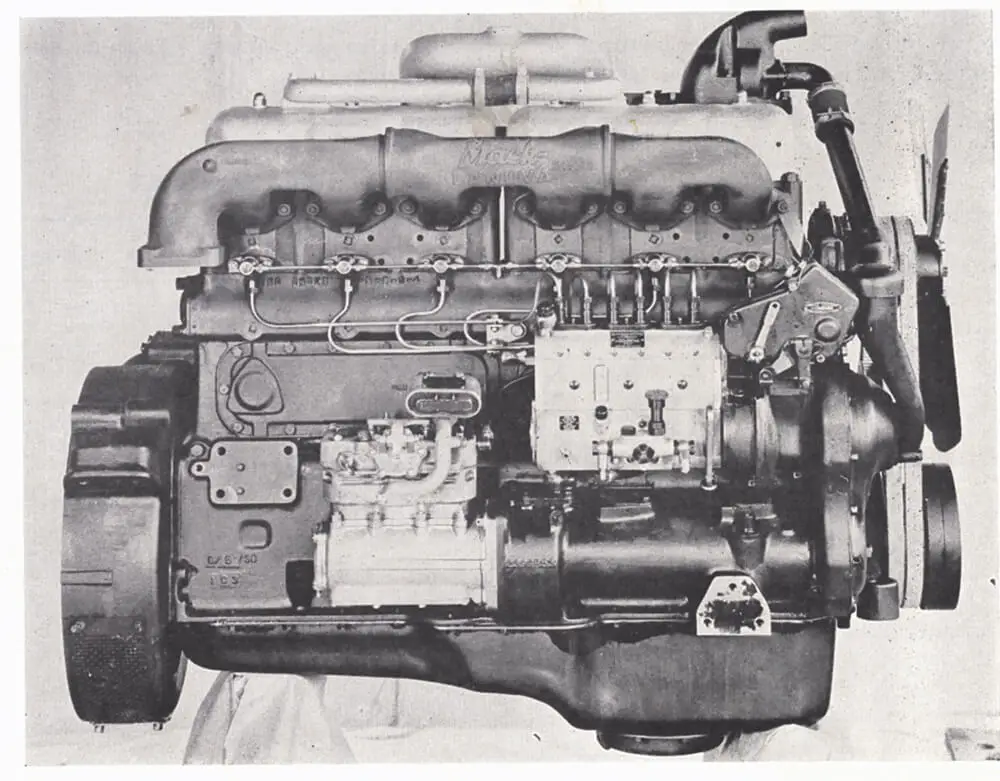 Some companies often step ahead of their competition. At times, that’s a step too far and requires two steps back, but not this particular time. When Mack Trucks Inc. embarked on the road towards diesel engines in 1927, they were charting the course for an entire industry and took no steps back. Their careful research yielded a viable truck diesel that was successful within the limitations of the market then. Mack was one of the few truck manufacturers to build their own engines. They weren’t the first company to offer a diesel option in big trucks, though they were at the forefront of those that did, but Mack gets the nod for being the first truck company to build their own diesels in-house.
Some companies often step ahead of their competition. At times, that’s a step too far and requires two steps back, but not this particular time. When Mack Trucks Inc. embarked on the road towards diesel engines in 1927, they were charting the course for an entire industry and took no steps back. Their careful research yielded a viable truck diesel that was successful within the limitations of the market then. Mack was one of the few truck manufacturers to build their own engines. They weren’t the first company to offer a diesel option in big trucks, though they were at the forefront of those that did, but Mack gets the nod for being the first truck company to build their own diesels in-house.
Progress, Mack started looking at diesels in 1927. During a research period that ran from ‘27 into ‘35, they sent engineers to study in Europe and even bought engines to test in Mack trucks, including one from Mercedes Benz. Starting in 1936, they offered diesels from Buda and Cummins as options in certain trucks and that also added to the teachable moments. At Mack’s engineering research facilities in Long Island City, New York, and Plainfield, New Jersey, engineers tested a variety of diesel types, including two and four-stroke, sleeve valve, direct injection, air cell, swirl chamber and Lanova. By 1935, they had settled on the Lanova system.
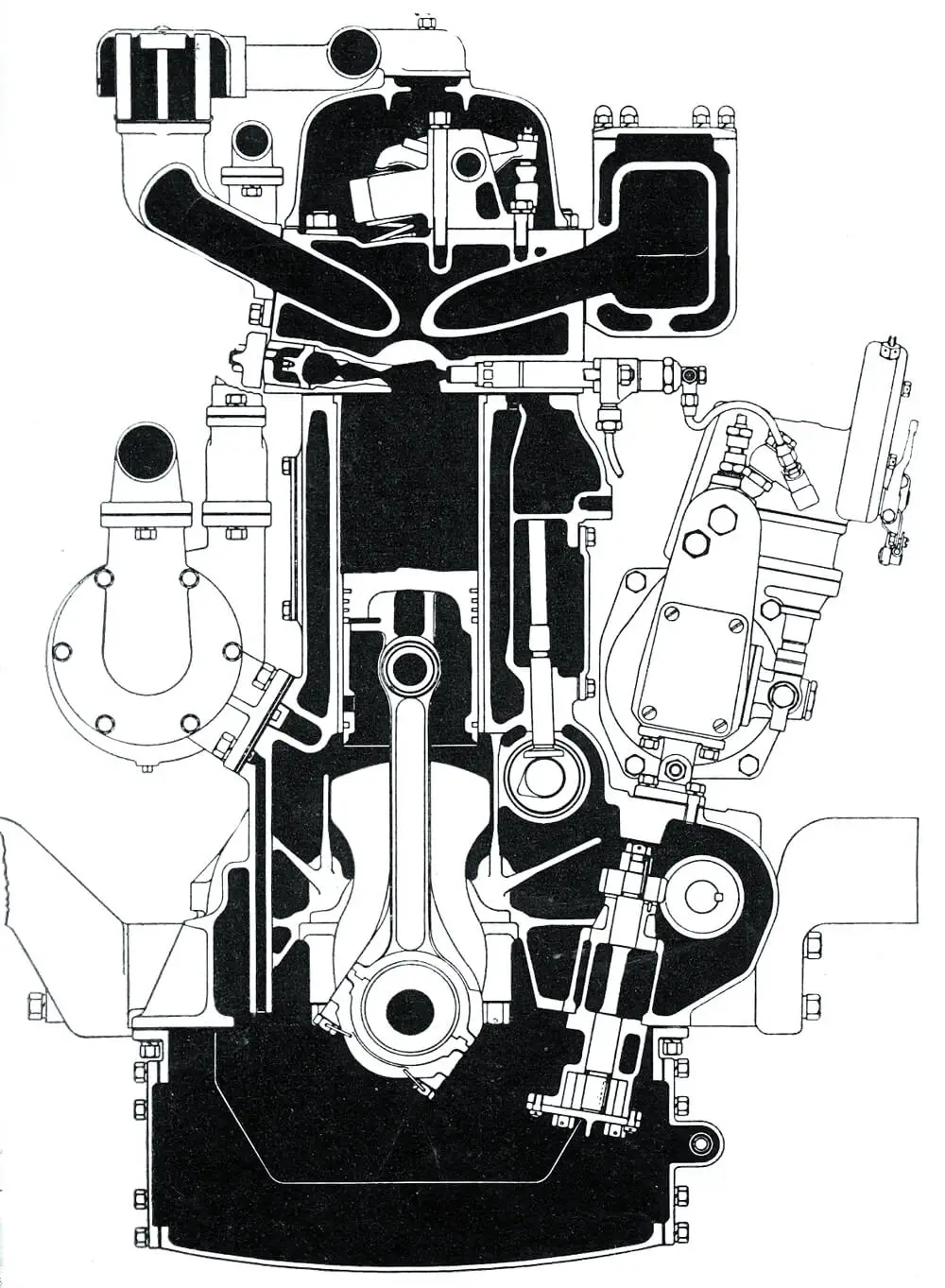
If you’ve been reading Vintage Smoke for a while, you will have noticed the Lanova system has come up a lot. With good reason. Designed by Franz Lang in Germany, the Lanova energy cell was quite popular in the early days of diesel. We covered it extensively in the July 2019 issue and the nearby illustration shows how it works. Suffice it to say, it was a smooth, gentle way to achieve compression ignition that didn’t put excessive strain on components. It allowed for diesel engines to be cost-effectively downsized to better fit motor vehicles but without too many compromises of output and with great fuel economy.
Once the Lanova system had been licensed from the Lanova Corporation in New York, Mack engineers began designing an engine around it. Much of that work had been ongoing for a new line of engines, so the development time was relatively short. Lanova lent itself to gas engine architecture so essentially one basic engine could be designed for gas or diesel. As a result, the 519 cubic inch (4.375 x 5.75-in bore and stroke) six-cylinder ED engine that debuted shared many design features with the 519 cubic inch gasoline EO six. The diesel was rated at 131hp at 2000 rpm (381 lbs-ft @ 1300) and the gasser cranked out 154 hp at 2350 rpm (378 lbs-ft @ 1000).The diesel was an option in Mack’s larger trucks.
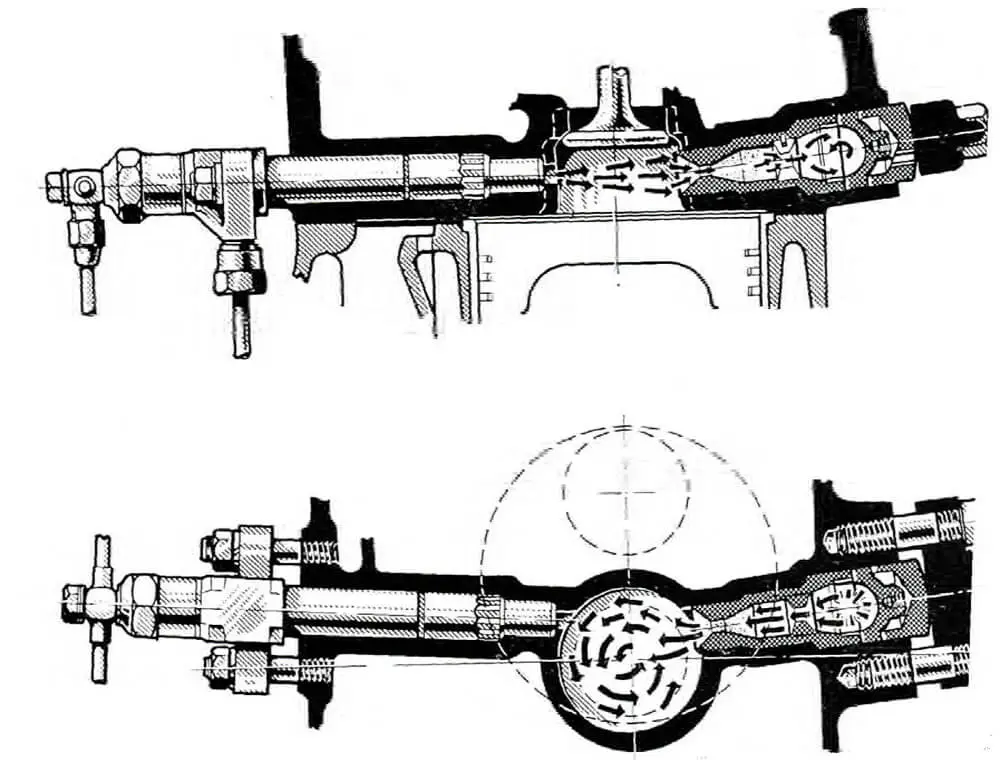
By 1940, the ED had been joined by three other diesels in the same family, the END405, END457 and END605. These diesels corresponded to the EN series gas engines of the same displacements. The EN series gas engines were new for 1939/40 so they translated well to the addition of Lanova heads to the same basic architecture. The smaller engines allowed them to be used in some of the lower GVW Mack trucks of the day and the larger allowed Mack to expand the diesel options at the other end of the range.
Starting around 1940, Mack also introduced a line of marine engines and some were built in the 457, 519 and 605 cubic in displacements but the specter of global war was starting to dampen a lot of Mack’s plans. The Mariner line of Mack diesels include a 200 horsepower supercharged version of the END605, the ENDS605. In 1944, Mack developed a prototype lightweight 1210 cubic inch V12 marine engine for the Navy built of plate steel. It was a supercharged Lanova and developed 400 horsepower at 2100 rpm. It was made of plate steel to save weight without using scarce aluminum. It weighed under 500 pounds.
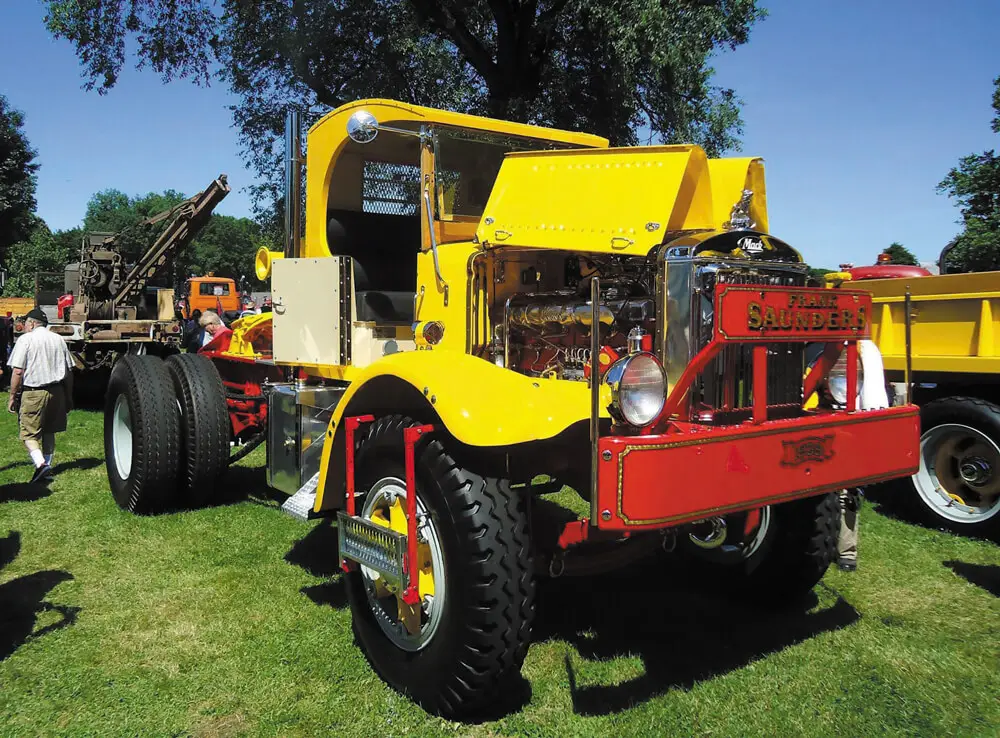
APPLICATIONS
In 1940, the French military special-ordered 260 18-ton 6×4 fuel tankers, which Mack dubbed the EXBX, and they mounted ED diesel engines. Before they were delivered, France fell to the Nazis so the order was diverted to Britain, who adapted them for use as tank transporters/recovery vehicles used them extensively in the North African campaign. At nearly the same time, Mack also developed the 10-ton NR series trucks, many of which were sent to the British and Russians as well as being used by U.S. forces. Built in several variations from NR-1 through NR-20, some 16,548 were built. The U.S. military used them as long haul trucks. European allies loved the NR and after the war, surplus trucks became extremely popular as heavy commercial rigs. Under the Marshall plan, NR-18, NR-19 and NR-20 trucks were given to Belgium, the Netherlands and France to help rebuild their militaries.
FURTHER DEVELOPMENT
Mack did not rest on it’s laurels and once their wartime commitments were fulfilled, they began looking at updating the line. In 1945, the END672 debuted. It wasn’t a clone of the older designs, though it was influenced by them. It had many upgrades but continued to use the Lanova system. This would become the big-boy of the Mack lineup and carry on through 1952, when the Lanova combustion chamber would be replace by a direct injection setup… the legendary Mack Thermodyne END673 diesel. Below the heads, the Thermodyne was very much the same as the Lanova (new pistons of course).
The forward-thinking Mack knew the Lanova system was a stopgap and as soon as circumstances allowed, they went to direct injection using a design that came from one of their partners in Europe, Scania-Vabis of Sweden. The ED and END Mack-Lanova engines had their time in the limelight and ably carried Mack into the diesel era.
